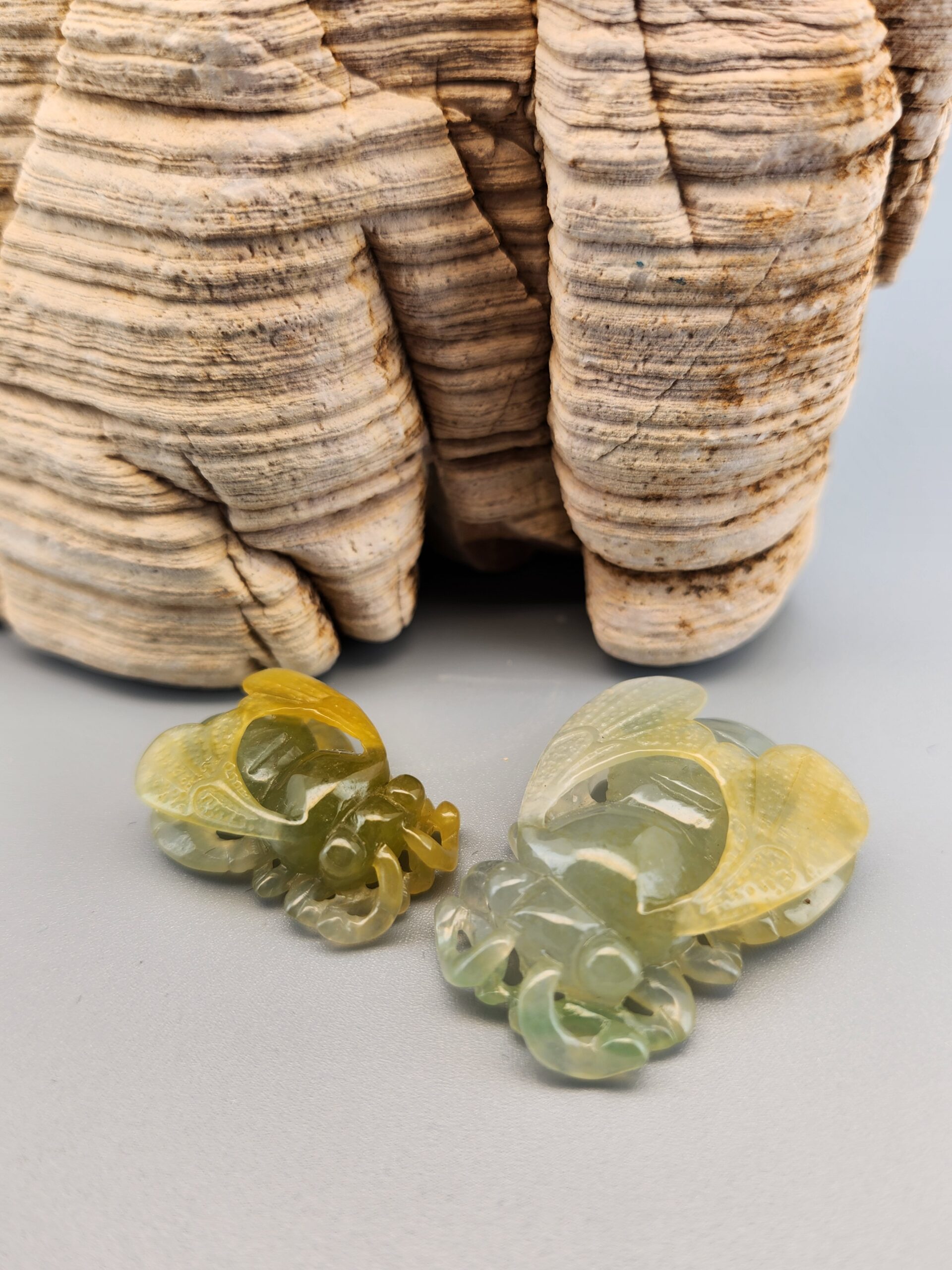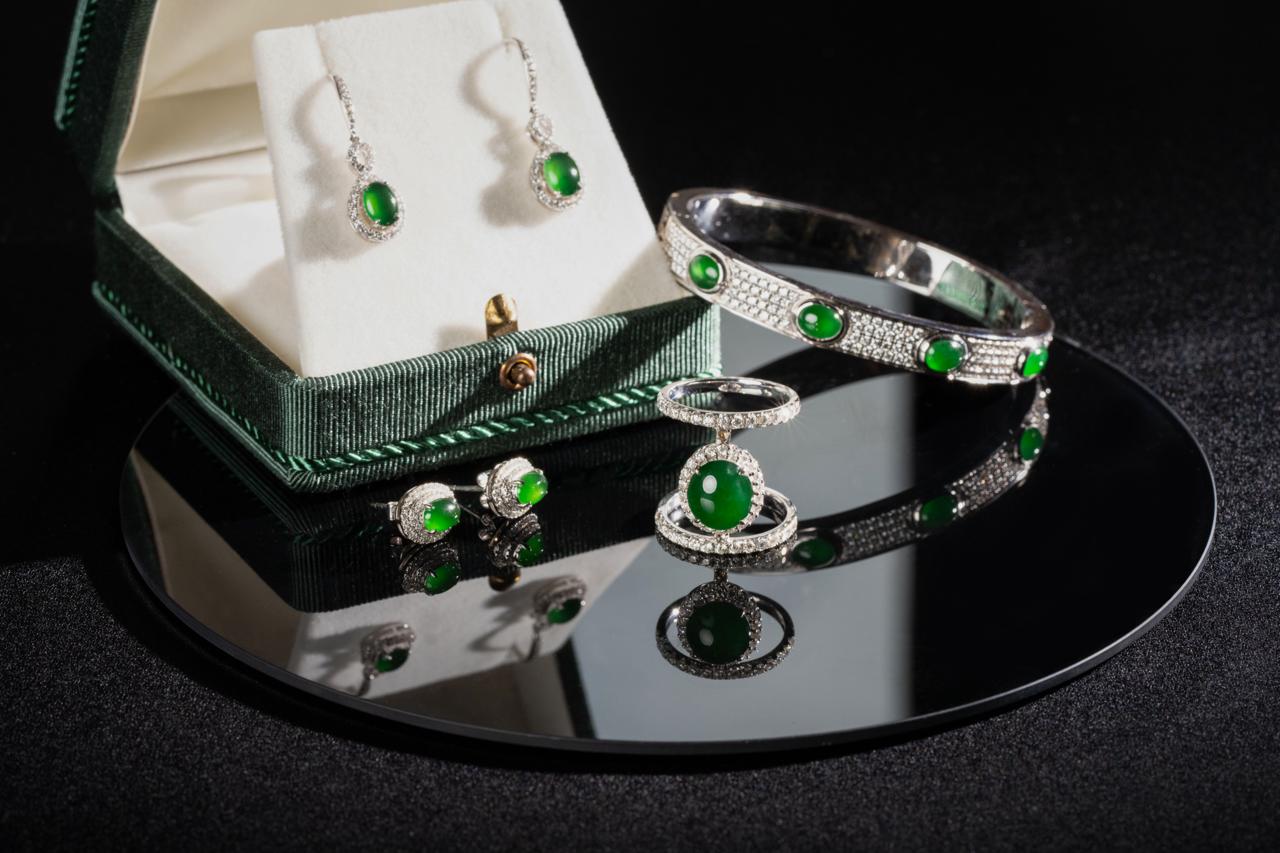A Once-in-a-Millennium Encounter, the World's Most Beautiful Meeting
The Motivation Behind Jade Collection
Collecting jade can be driven by various motivations, from investment purposes to the appreciation of its beauty. For Teri, it is a journey of learning and discovery.
In 2018, following the death of her father, Teri's mother entrusted her with a bag of jade jewelry. This marked the first time Teri took a serious interest in these green gemstones. The pieces had been passed down from her grandmother to her father and were over a century old.
Initially, Teri had no knowledge about gemstones. To educate herself, she enrolled in online courses focused on jade identification. Last year, she completed an internationally recognized professional jewelry identification course, earning the title of a Graduate Gemologist (GIA Graduate Gemologist). Nowadays, Teri occasionally conducts jewelry knowledge-sharing sessions, aiming to disseminate her insights about jewelry. Throughout her learning journey, she acquired numerous jade bangles, cabochons, and artistic carvings.
"Collecting is a record of my learning journey. Initially, to deepen my understanding, I learned through purchasing. However, at a certain point, I paused. As my knowledge grew, my standards also increased, and I naturally became more selective with my purchases," Teri explained.
The Art of Crafting Jadeite Bracelets
Bracelets have always been considered the most valuable form of jadeite, but why is that? Teri explains, "In a large piece of raw jadeite with mixed colors—white, black, rust—the carver must find a perfect circle to carve a bracelet. Within this circle, it must be ensured there is green, it's transparent, and free of impurities. Imagine how difficult that is! A high-value jadeite bracelet is truly a once-in-a-millennium encounter." Jadeite is the representative of jade and is known as the king of jade. It is the only jade internationally recognized as a gemstone because it has unparalleled characteristics: rich colors, stable properties, strong luster, high refractive index, and high density. Most importantly, jadeite is a non-renewable natural resource, formed through geological changes over tens of millions of years.
Not All Green is Good
Teri's collection of around 100 jadeite bracelets showcases different hues. "Many people think jadeite is better the greener it is, but that's not true. Jadeite colors include green, violet, yellow, white, black, and transparent. Green is the most expensive, violet is second, followed by transparent and colorless jadeite."
In the world of jadeite, there is a saying: "Amateurs look at color, experts look at type." Color isn't everything. "Yes, 'type' refers to the fineness of the jadeite's crystal structure. The finest, most lustrous ones are glass type and ice type, which are top-quality. 'Water' refers to transparency. For example, consider two different pieces of jadeite: one is green but opaque like a mung bean, which we call bean type; the other is lighter in color but very transparent. The transparent one is more valuable and worth investing in. We don't just look at color; we also look at type and water. This principle is crucial for jadeite collecting."
Artistic Treasures
Teri also has a collection of artfully carved pieces, including a sparkling dragon turtle and delicate insects. "Jadeite used for carving doesn't meet the gemstone-grade criteria, so its value lies in the artistic craftsmanship rather than the jadeite's inherent value. These pieces are regarded as art, prized for the carver's skill. For example, the Jadeite Cabbage in the National Palace Museum in Taipei is the most iconic example."
Teri elaborates, "A piece of jadeite has both transparent and opaque parts. The carver considers the original stone's shape, color, and transparency to create a unique final product. For example, the carver might turn the less desirable part into the dragon turtle's base, leaving the transparent part for the head. Shining a flashlight through it reveals the light-passing areas, indicating its value."
Pointing to a collection of tiny, colorful carvings, including winged seeds, peanuts, and broad beans, Teri says, "Although they don't have investment value, they have ornamental value and are often made into decorations symbolizing prosperity and good fortune."
The Five Categories of Jadeite Collection
Jadeite Cabochons: The finest part of jadeite, with the highest grade of type and color, flawless and crack-free. These can be set into rings, pendants, earrings, and other luxurious jewelry.
Jadeite Bracelets: Require very high-quality raw stones. First, the stone must be large; second, it must be free of flaws and cracks; third, the color and type must be excellent. The more transparent and lustrous, the higher the quality.
Jadeite Buddha Pendants: Made from stones that can't be used for bracelets. These pendants are often clear, smooth, intricately carved, and hold significant value. Their shapes, colors, and smooth surfaces contribute to their collectible value.
Lucky Charms: Jadeite pieces with minor flaws or small cracks are made into charms like fortune beans, symbolizing abundance and prosperity.
Jadeite Ornaments: Items like dragon turtles and fruits, crafted from stones not suitable for jewelry. Despite lower quality, these pieces are valued for their intricate craftsmanship and still hold collectible value.





Five Keywords for Jadeite Collection
Wear: Wearing jadeite allows it to absorb body heat and oils, enhancing its luster over time.
Wipe: Exposure to air requires cleaning and wiping to prevent dust from dulling its surface.
Hydrate: When jadeite's color dims or transparency decreases, it's a sign of dehydration. Placing it in water and sealing it in a container for a while can restore its luster.
Avoid Sunlight: Direct sunlight can affect jadeite's quality and color.
Avoid Impact: Despite being hard, jadeite is vulnerable to cracks and breakage upon impact with hard objects.
Credits: Oneness Magazine, 华汇杂志

